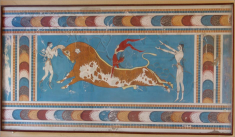Speaker
Description
Gamma-Ray Bursts constitute one of the most fascinating and relevant phenomena in modern science, with strong implications for several fields of astrophysics, cosmology and fundamental physics. Indeed, the huge luminosity, the redshift distribution extending at least up to z~10 and the association with the explosive death of very massive stars make long GRBs (i.e., those lasting up to a few minutes) potentially extremely powerful probes for investigating the early Universe (pop-III stars, cosmic re-ionization, SFR and metallicity evolution up to the "cosmic dawn") and measuring cosmological parameters. The combination of extreme distances, the huge number of photons emitted over about three orders of magnitude in photon energy and the variability down to few ms makes these phenomena also a uniquely powerful and promising tool for performing tests of fundamental physics like Lorentz Invariance Violation (LIV) with unprecedented accuracy. At the same time, as demonstrated by the GW170817 event, short GRBs (lasting no more than a few s) are the most prominent electromagnetic counterpart of gravitational-wave sources like NS-NS and NS-BH merging events, and both long and short GRBs are expected to be associated with neutrino emission. My review will include the status, concepts and expected performances of space mission projects (e.g, THESEUS, Gamow Explorer) aiming at fully exploiting these unique potentialities of the GRB phenomenon, thus providing an ideal synergy with the large e.m. facilities of the future like LSST, ELT, TMT, SKA, CTA, ATHENA in the e.m. domain, advanced second generation (2G++) and third generation (3G) GW detectors and future large neutrino detectors (e.g., Km3NET).
Details
Lorenzo Amati, INAF - OAS Bologna, ITALY
http://people.oas.inaf.it/amati/
| Is this abstract from experiment? | Yes |
|---|---|
| Name of experiment and experimental site | THESEUS http://www.isdc.unige.ch/theseus/ |
| Is the speaker for that presentation defined? | Yes |
| Internet talk | Yes |
